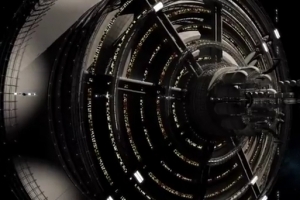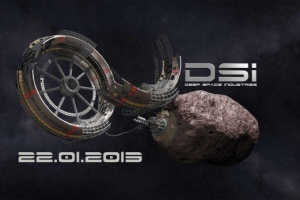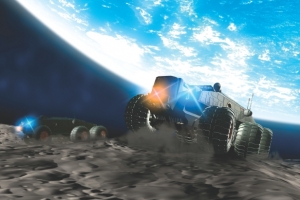We spoke to the President and Chief Engineer of Planetary Resources about their plans to create a new trillion-dollar space industry.
 FutureTech
FutureTech

 FutureTech
FutureTech
We spoke to the President and Chief Engineer of Planetary Resources about their plans to create a new trillion-dollar space industry.
 FutureTech
FutureTech
Absurdly ambitious or definitely doable? Let us know your thoughts on DSI’s plans to mine asteroids for valuable resources below.
 FutureTech
FutureTech
Deep Space Industries has unveiled plans for a new robotic exploration fleet.
[fototag id=”asteroidmining2″]
Surrounding the Earth are hundreds of mineral-rich rocks, or asteroids, containing what might be billions or even trillions of dollars worth of resources, including metal and water. The possibility of tapping into these unclaimed goldmines has been a long-held and seemingly unobtainable dream, but it might be one that is now moving closer to reality.
Consider the stats, and you’ll start to realise why mining asteroids could be so important for the future of the human race. Just one near-Earth asteroid several kilometres in size could contain more precious metal than has ever been used by humanity, and enough water to power fleets of rockets.
The problem, as is ever the case with new space exploration proposals, is money. Who’s going to stump up the cash to mount an expedition to an asteroid that, for one, could fail, and two, would require huge infrastructure to even be considered a moderate success? The answer could be in the form of private enterprises with an eye for adventure and discovery rather than a significant return in investment.
One company that made headlines earlier this year to do just that was Planetary Resources. A conglomeration of entrepreneurs and technicians including co-founder Peter Diamandis and film director James Cameron, this ambitious venture will be the first to aim to mine asteroids and return their valuable resources to Earth or use them in space.
To read the rest of this article, check out issue 6 of All About Space magazine, on sale now.
Illustration by Adrian Mann
How could we extract valuable resources from floating space rocks near Earth?
How the Japanese mission that seemed destined to fail returned the first asteroid samples to Earth.
 FutureTech
FutureTech
It’s set to be the next big thing in space exploration, but what makes asteroid mining so important?